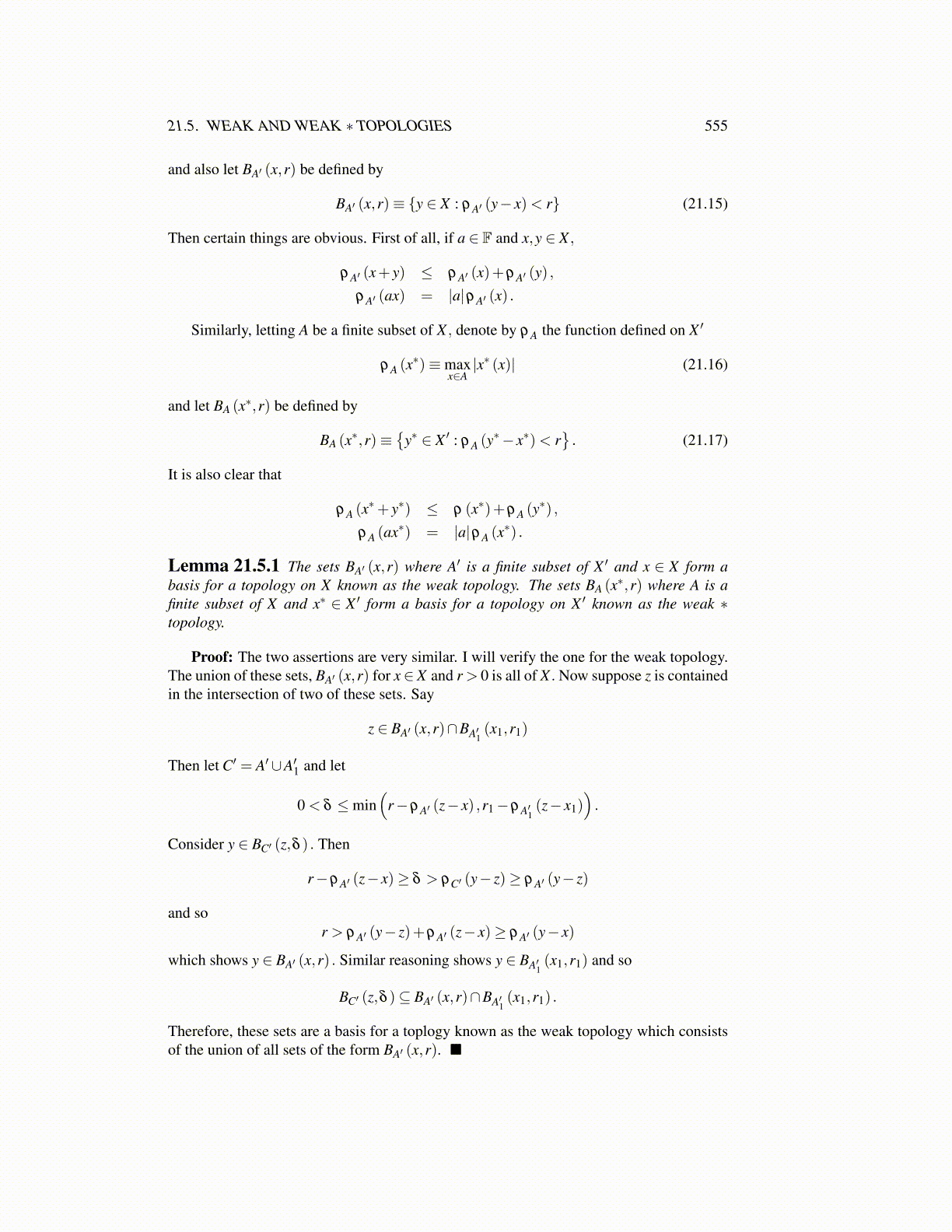
21.5. WEAK AND WEAK ∗ TOPOLOGIES 555
and also let BA′ (x,r) be defined by
BA′ (x,r)≡ {y ∈ X : ρA′ (y− x)< r} (21.15)
Then certain things are obvious. First of all, if a ∈ F and x,y ∈ X ,
ρA′ (x+ y) ≤ ρA′ (x)+ρA′ (y) ,
ρA′ (ax) = |a|ρA′ (x) .
Similarly, letting A be a finite subset of X , denote by ρA the function defined on X ′
ρA (x∗)≡max
x∈A|x∗ (x)| (21.16)
and let BA (x∗,r) be defined by
BA (x∗,r)≡{
y∗ ∈ X ′ : ρA (y∗− x∗)< r
}. (21.17)
It is also clear that
ρA (x∗+ y∗) ≤ ρ (x∗)+ρA (y
∗) ,
ρA (ax∗) = |a|ρA (x∗) .
Lemma 21.5.1 The sets BA′ (x,r) where A′ is a finite subset of X ′ and x ∈ X form abasis for a topology on X known as the weak topology. The sets BA (x∗,r) where A is afinite subset of X and x∗ ∈ X ′ form a basis for a topology on X ′ known as the weak ∗topology.
Proof: The two assertions are very similar. I will verify the one for the weak topology.The union of these sets, BA′ (x,r) for x∈ X and r > 0 is all of X . Now suppose z is containedin the intersection of two of these sets. Say
z ∈ BA′ (x,r)∩BA′1(x1,r1)
Then let C′ = A′∪A′1 and let
0 < δ ≤min(
r−ρA′ (z− x) ,r1−ρA′1(z− x1)
).
Consider y ∈ BC′ (z,δ ) . Then
r−ρA′ (z− x)≥ δ > ρC′ (y− z)≥ ρA′ (y− z)
and sor > ρA′ (y− z)+ρA′ (z− x)≥ ρA′ (y− x)
which shows y ∈ BA′ (x,r) . Similar reasoning shows y ∈ BA′1(x1,r1) and so
BC′ (z,δ )⊆ BA′ (x,r)∩BA′1(x1,r1) .
Therefore, these sets are a basis for a toplogy known as the weak topology which consistsof the union of all sets of the form BA′ (x,r). ■